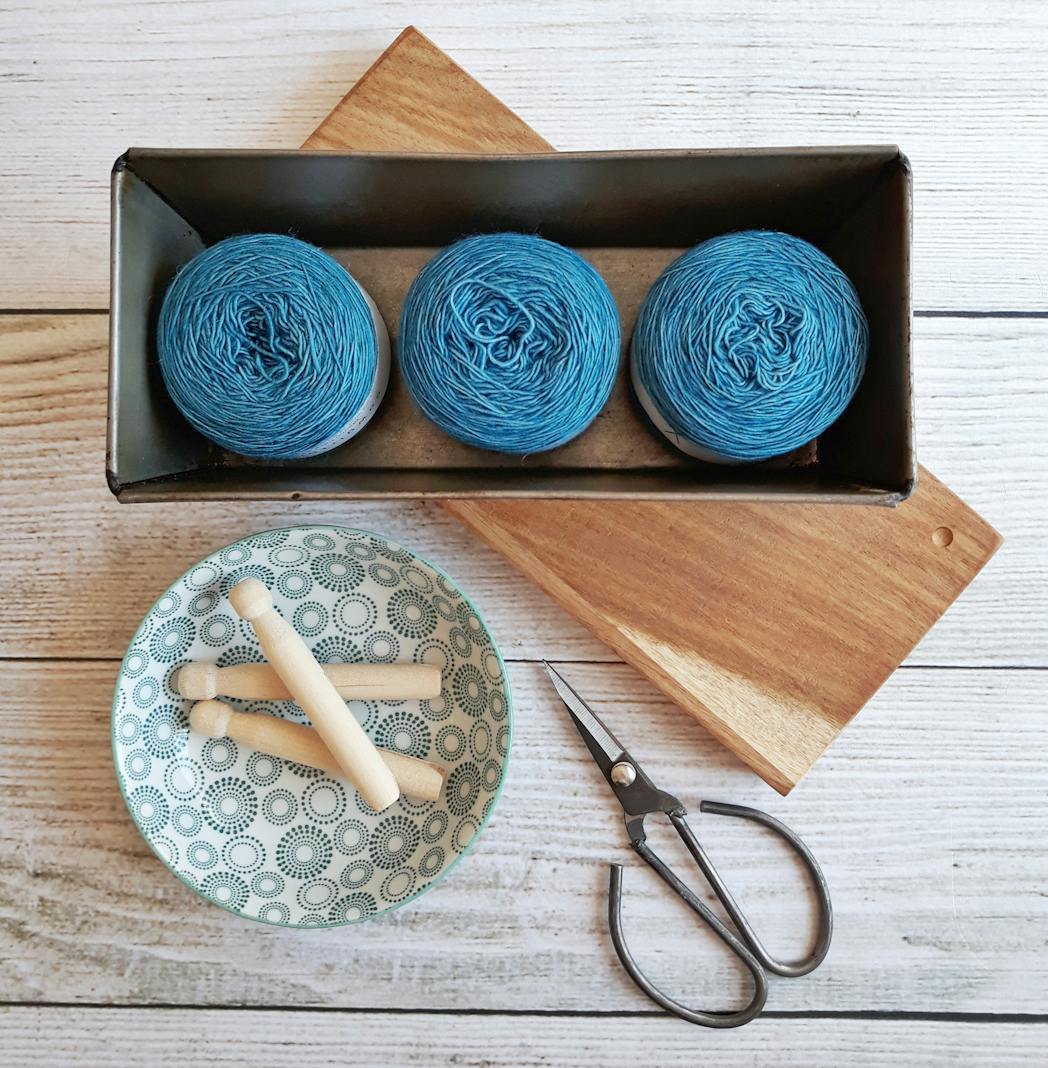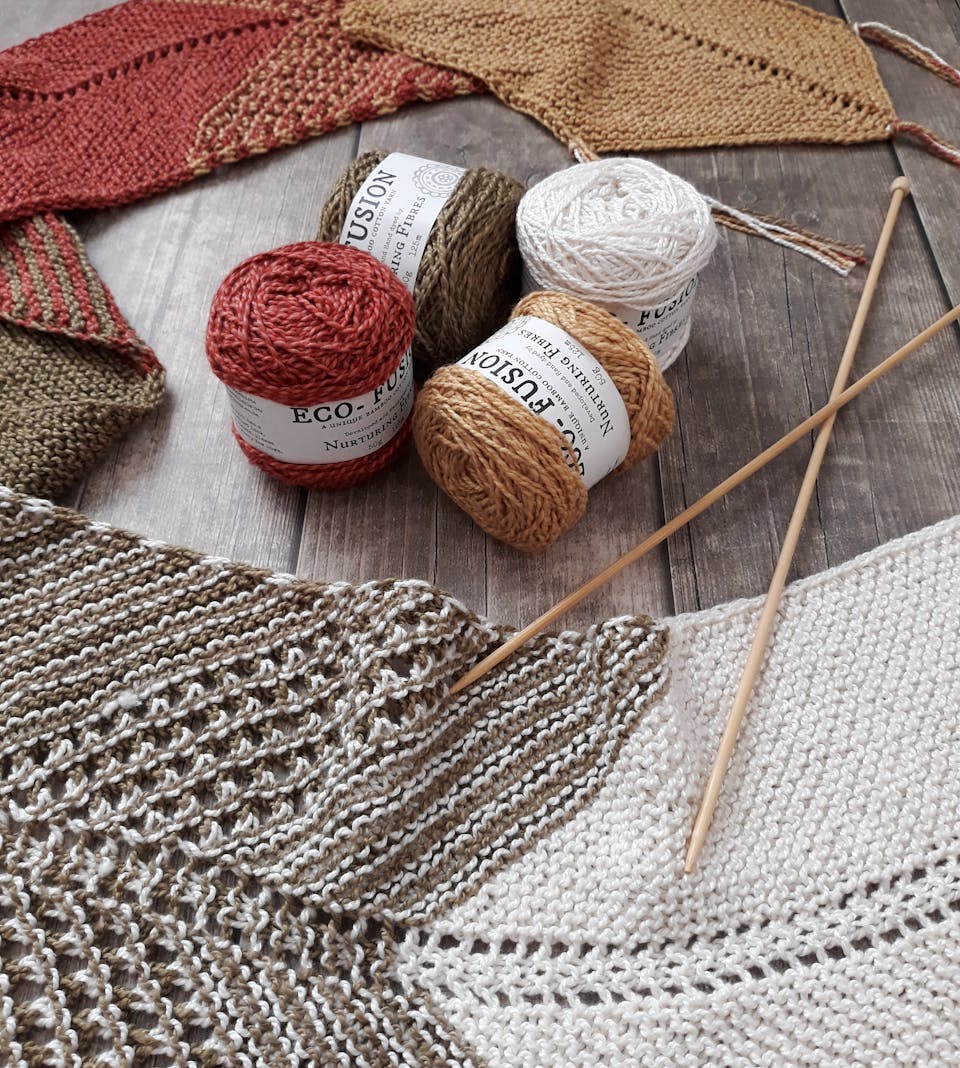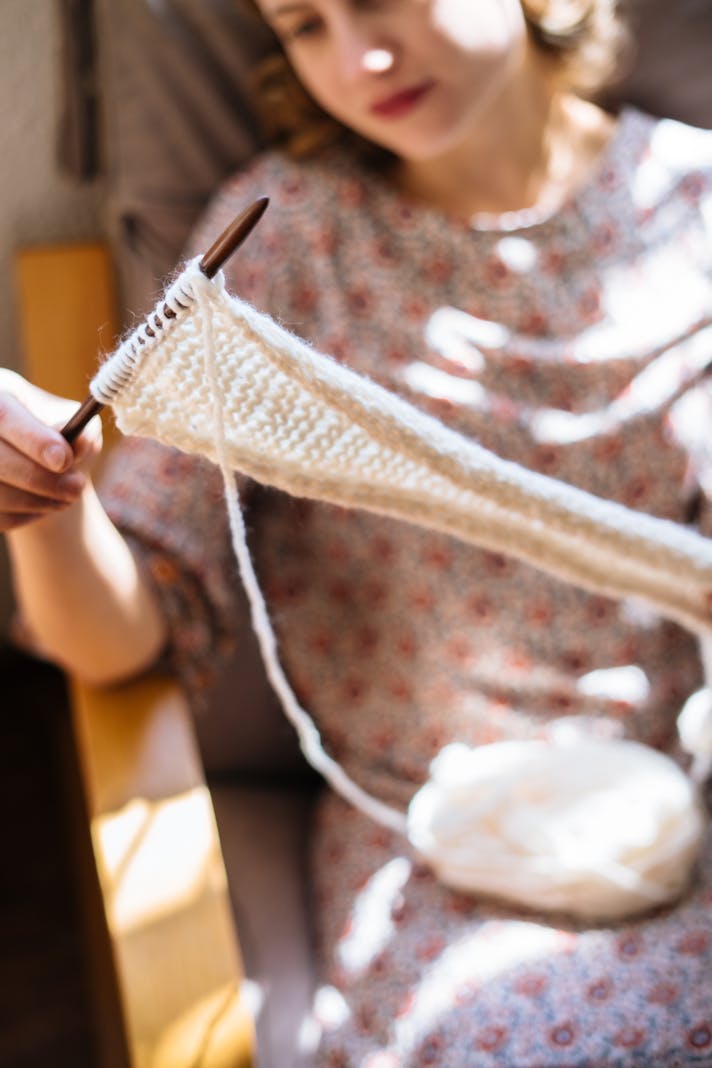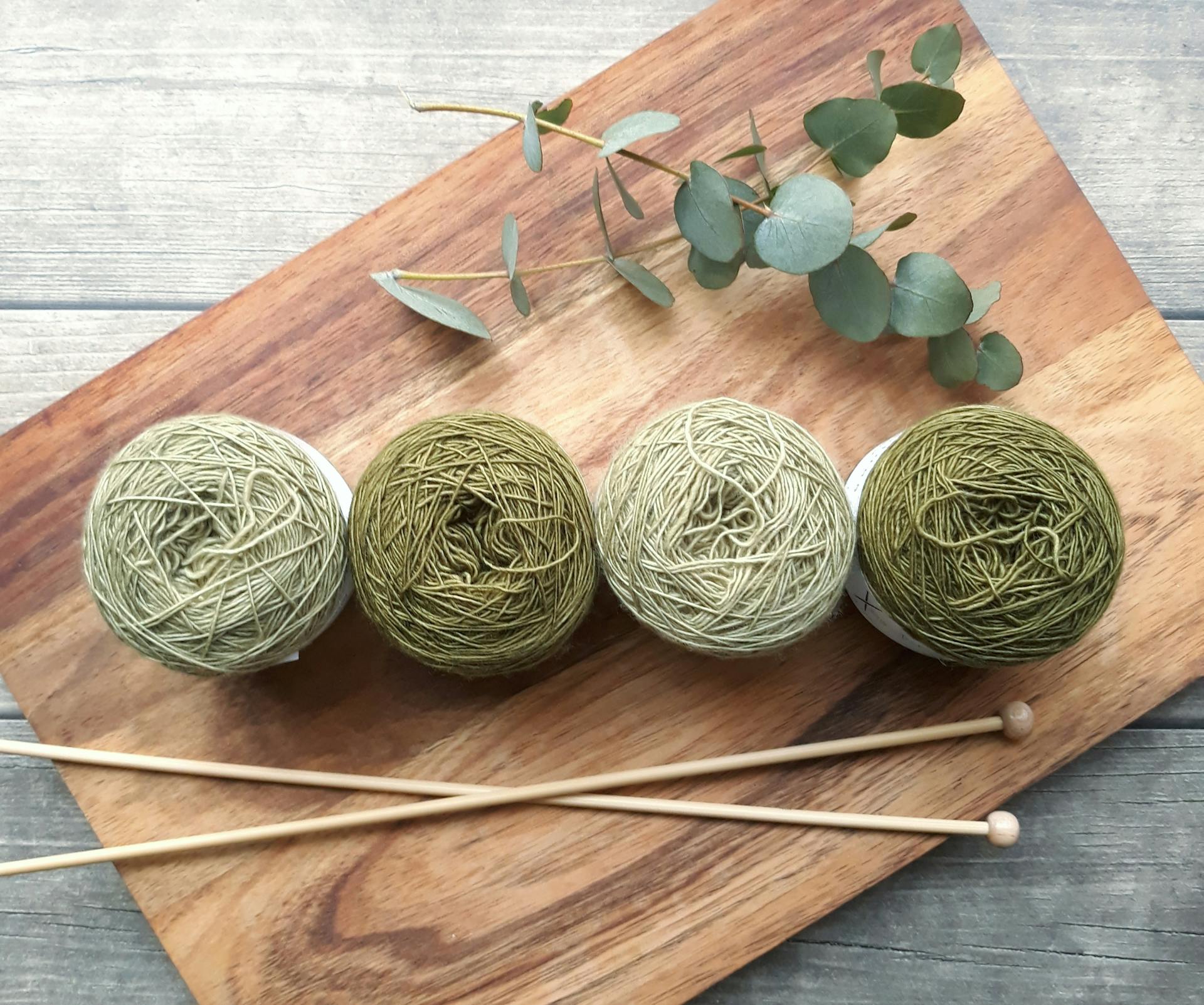Lace Borders

Simple projects are the bread and butter of the knitted repertoire. Socks, hats, shawls, even sweaters look good when knit in basic stockinette or garter. Sometimes, however, it’s nice to add just a small touch of je ne sais quoi to a project. Whether you want to feminize a garment or brighten up a basic baby blanket, why not add a lace border? It’s not that difficult to do.
There are a great many lace border patterns in the world, and if you have a good stitch dictionary you don’t need to re-invent the wheel. Take the time to find something that fits your skill level, and knit up a swatch of the lace pattern. Then knit a swath of the main area to see how the two different stitches work together. If you like the combination, you’re probably good to go for a small project (a hat or pair of socks) or for a flat knit (scarf, blanket.) Because a sweater involves shaping amidst the curves of our bodies, you might want to create a mock-up of the final piece. Take a sweater that fits you well and pin the lace to where it will go before putting the garment on. The lace will draw attention, so you’re going to want to decide beforehand if you want people looking at your waist (upper hip, sleeve edgings, or what-have-you.) Remember that lace by definition is transparent – if you’re not planning to layer the sweater over something else, you’ll have to decide if the fabric holes are in an appropriate place.
After you’ve planned out the combination of lace and stockinette, you’ll need to decide if you want to knit the border with the rest of the piece. For example, it’s possible to knit a shawl sideways, increasing and decreasing the stockinette or garter stitch area as you complete repeats of the border. You can also begin a sweater by using a lace pattern for a few inches before transitioning to the body stitch. This will minimize the amount of sewing needed, and allow you to balance the focus needed to knit the lace with an easier section.
If you’re in love with a complicated lace border, you may well decide to knit it up separately, adding a few stitches in the main pattern to one end. When you are finished, you can then then pick up and knit, continuing a north-south direction instead of the previous side-to-side orientation. Alternatively, you can finish the lace and then sew the border to the edge of the garment. Depending on the piece, the sewing will either add a stable line or a section with less stretch. Consider this when you plan the piece.
There are a great many lace border patterns in the world, and if you have a good stitch dictionary you don’t need to re-invent the wheel. Take the time to find something that fits your skill level, and knit up a swatch of the lace pattern. Then knit a swath of the main area to see how the two different stitches work together. If you like the combination, you’re probably good to go for a small project (a hat or pair of socks) or for a flat knit (scarf, blanket.) Because a sweater involves shaping amidst the curves of our bodies, you might want to create a mock-up of the final piece. Take a sweater that fits you well and pin the lace to where it will go before putting the garment on. The lace will draw attention, so you’re going to want to decide beforehand if you want people looking at your waist (upper hip, sleeve edgings, or what-have-you.) Remember that lace by definition is transparent – if you’re not planning to layer the sweater over something else, you’ll have to decide if the fabric holes are in an appropriate place.
After you’ve planned out the combination of lace and stockinette, you’ll need to decide if you want to knit the border with the rest of the piece. For example, it’s possible to knit a shawl sideways, increasing and decreasing the stockinette or garter stitch area as you complete repeats of the border. You can also begin a sweater by using a lace pattern for a few inches before transitioning to the body stitch. This will minimize the amount of sewing needed, and allow you to balance the focus needed to knit the lace with an easier section.
If you’re in love with a complicated lace border, you may well decide to knit it up separately, adding a few stitches in the main pattern to one end. When you are finished, you can then then pick up and knit, continuing a north-south direction instead of the previous side-to-side orientation. Alternatively, you can finish the lace and then sew the border to the edge of the garment. Depending on the piece, the sewing will either add a stable line or a section with less stretch. Consider this when you plan the piece.

Related Articles
Editor's Picks Articles
Top Ten Articles
Previous Features
Site Map
Content copyright © 2023 by Korie Beth Brown, Ph.D.. All rights reserved.
This content was written by Korie Beth Brown, Ph.D.. If you wish to use this content in any manner, you need written permission. Contact Korie Beth Brown, Ph.D. for details.







